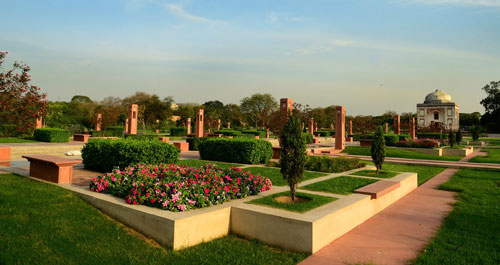|
|
The South
Asian Life & Times - SALT |
|
|||
|
Contents Feature Heritage People
Book Reviews Kaavad
Traditions of Rajasthan
- exploring
|
|
||||
|
Sunder Nursery The 70-acre Sunder
Nursery, situated along the erstwhile Mughal-era Grand Trunk Road, has
several monuments dating from the 16th century.
Known
as Azim Bagh during the Mughal period, it was established, as a nursery, in
1912 (when the imperial Delhi complex was being planned and constructed) to
try out different tree species from across India and overseas.
The nursery stretches from the entrance
plaza of Humayun’s tomb to the edge of the 16th century Azimganj
Serai – a grand corridor that is planned to exhibit the flora of Delhi’s
fast disappearing biodiversity. The nursery has already turned into a secure
habitat for ground nesting birds such as peafowl, and is a small haven for
migratory birds. Conservation work on
Sunder Burj, and the 18th century Garden Pavilion, began in 2008 and was
completed in three years. Sunder Burj, a 16th century tomb, with profusely
adorned interior, had been subjected to wrong conservation and repair works
in the previous century, and these had to be undone. Similarly, the garden
pavilion, with its distinctive architectural style, scale and ornamental
plasterwork, was in an extremely poor state and needed major repairs as it
had been virtually taken over by rampant vegetation, even wildlife. The area
around the pavilion was landscaped to create a formal garden setting.
Restoration work is ongoing on the 16th century
Sundarwala Mahal and Lakkarwala Burj. The latter has profusely ornamental
interiors with Quranic verses on plasterwork encircling the room. Along with restoration,
the Sunder Nursery is also being landscaped anew. A pedestrian central axis,
formally arranged gardens around the heritage structures, a proposed
arboretum, mist chambers and water gardens – all will revitalise this
heritage space.
|
|||||
|
Copyright © 2000 - 2015 [the-south-asian.com]. Intellectual Property. All rights reserved. |
|||||
